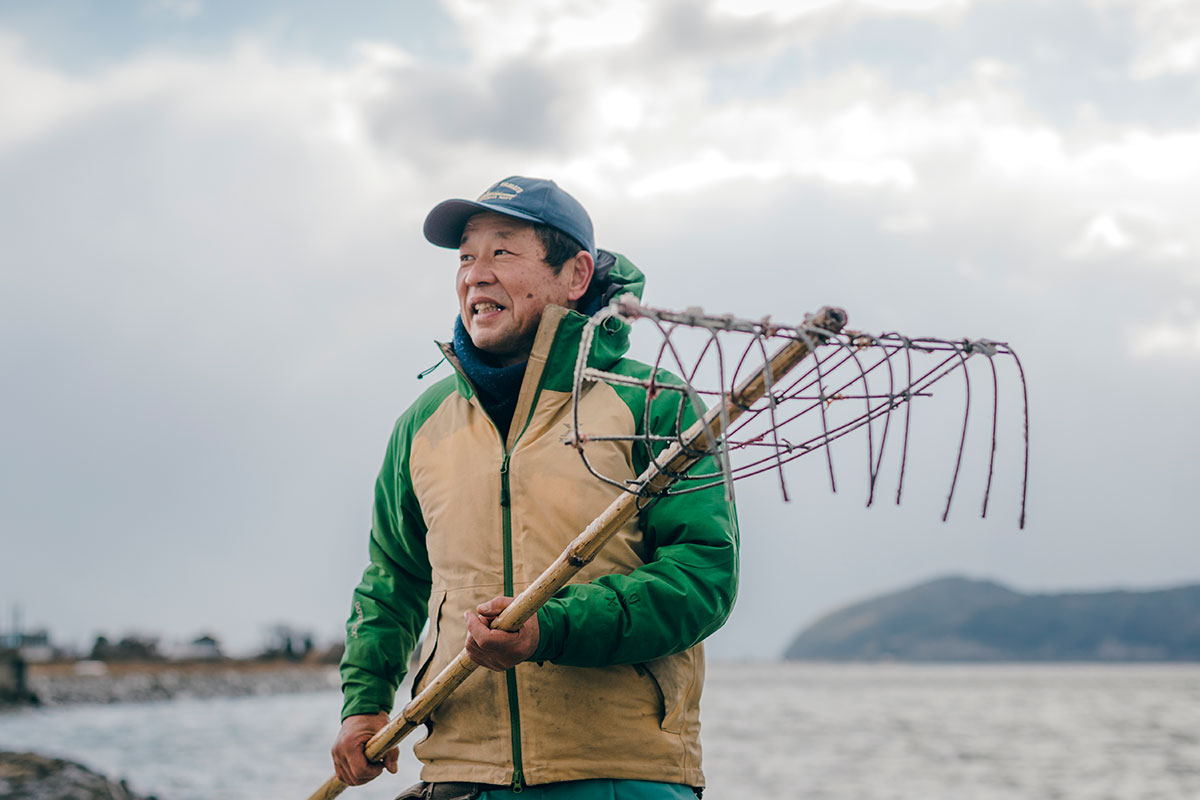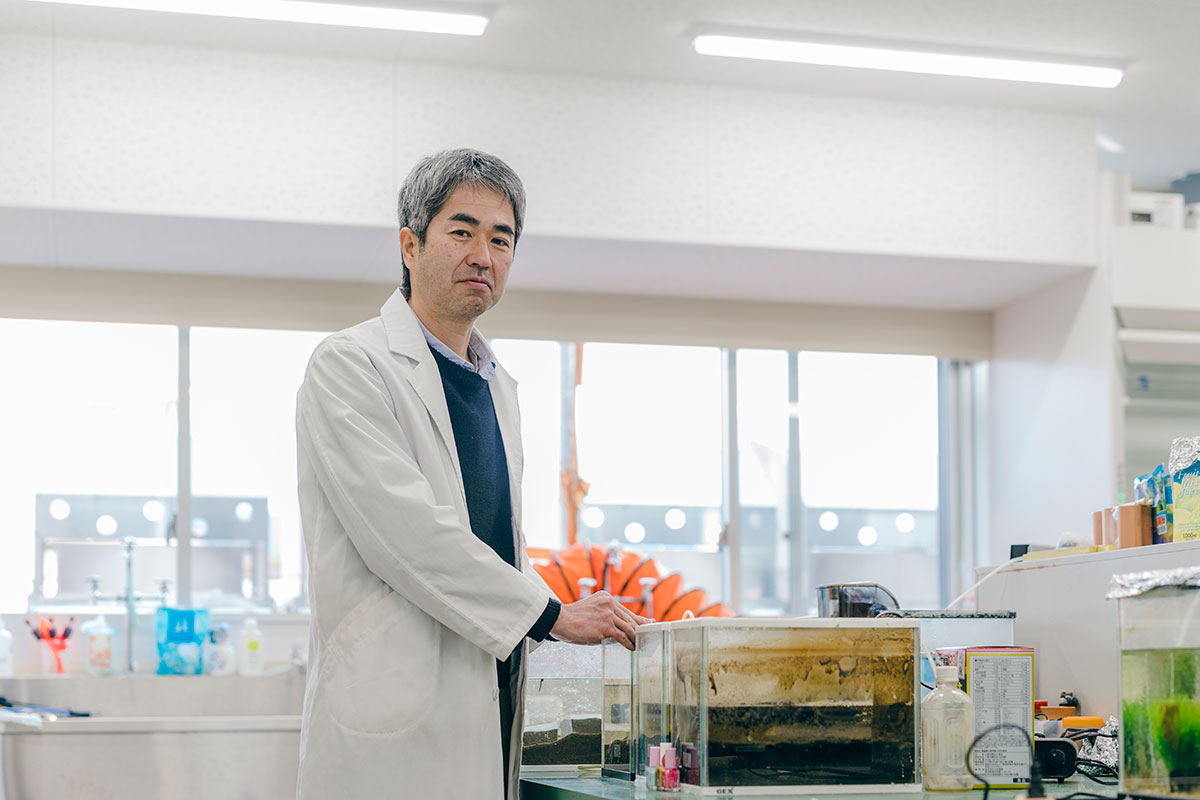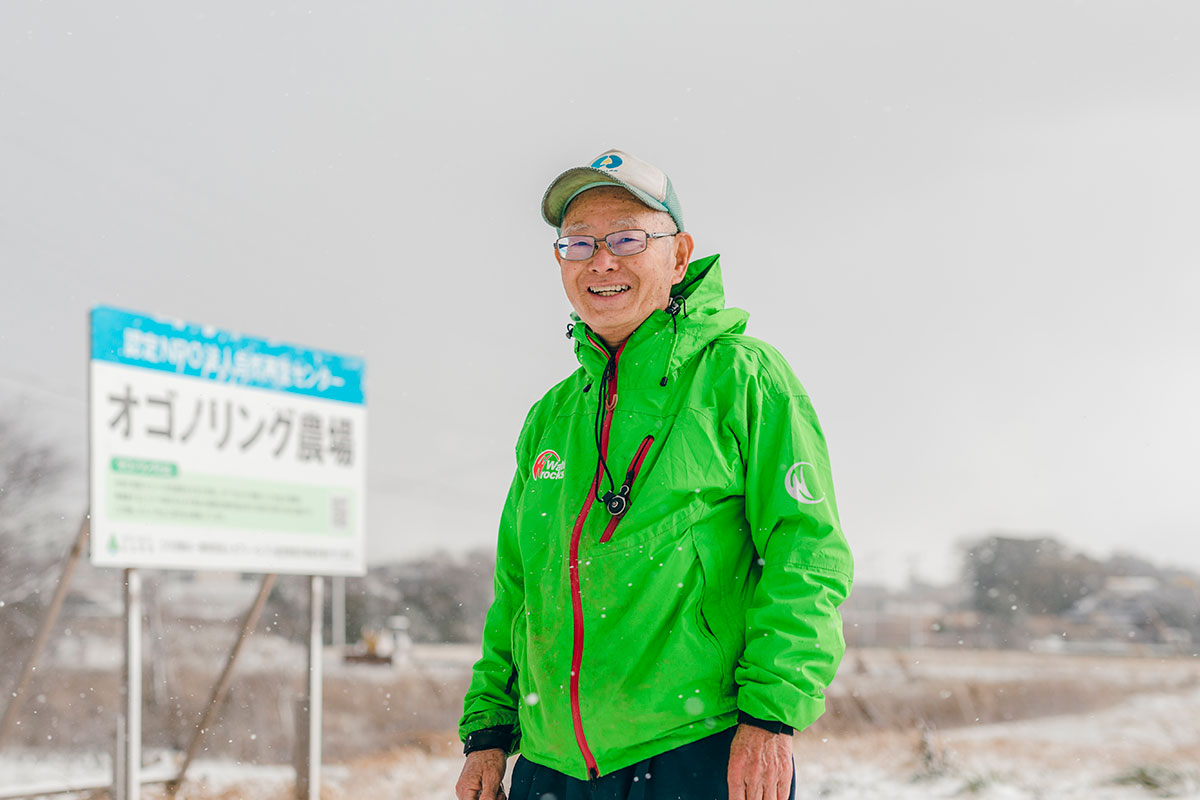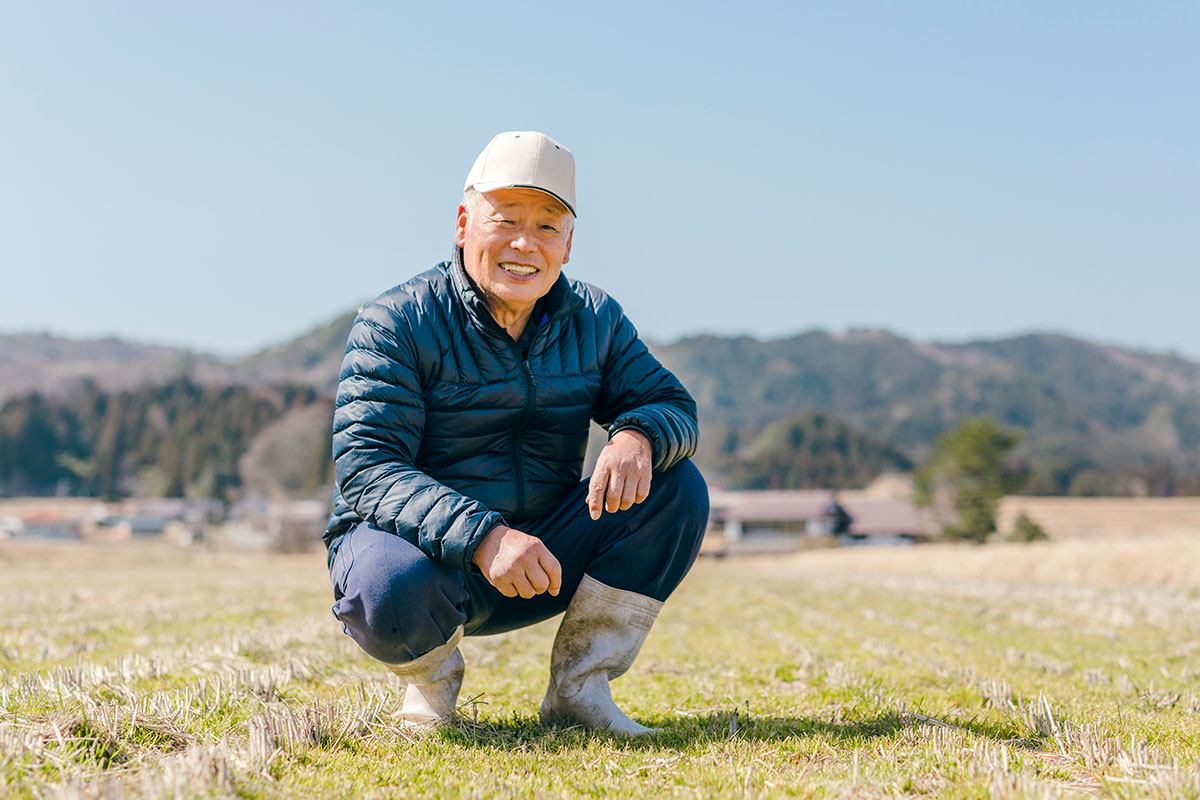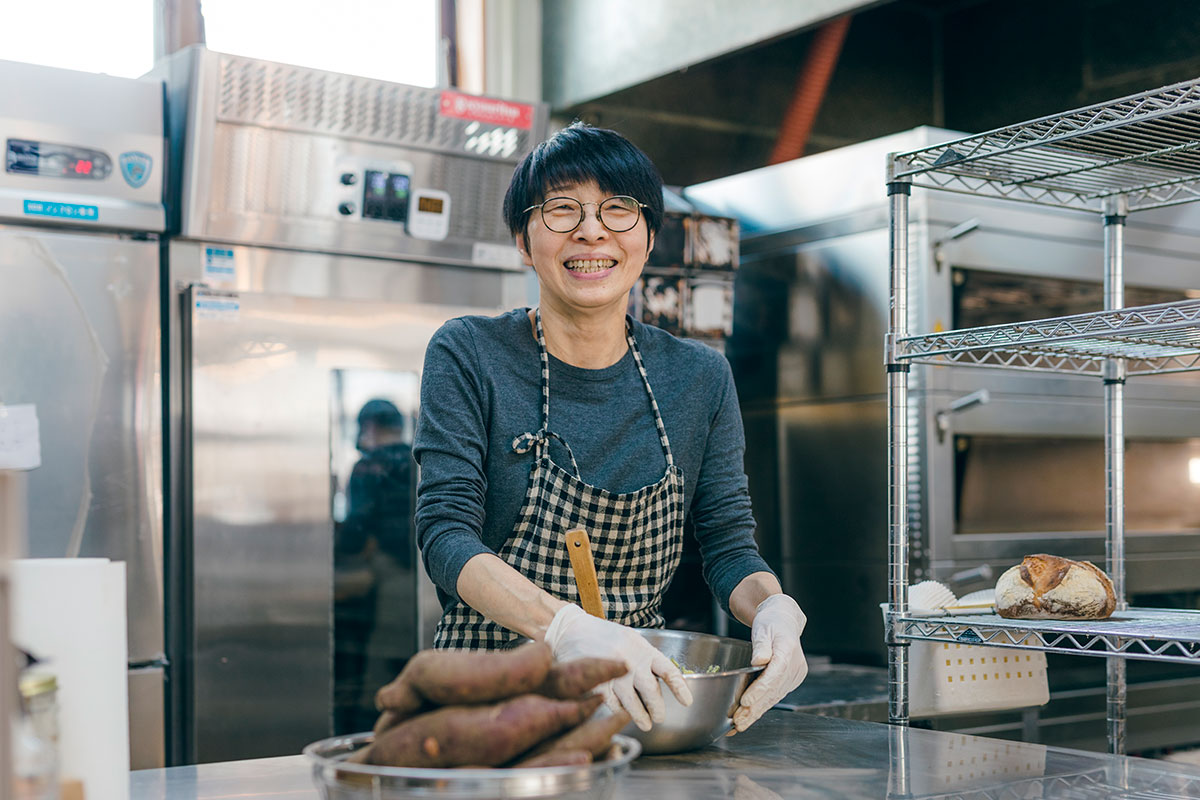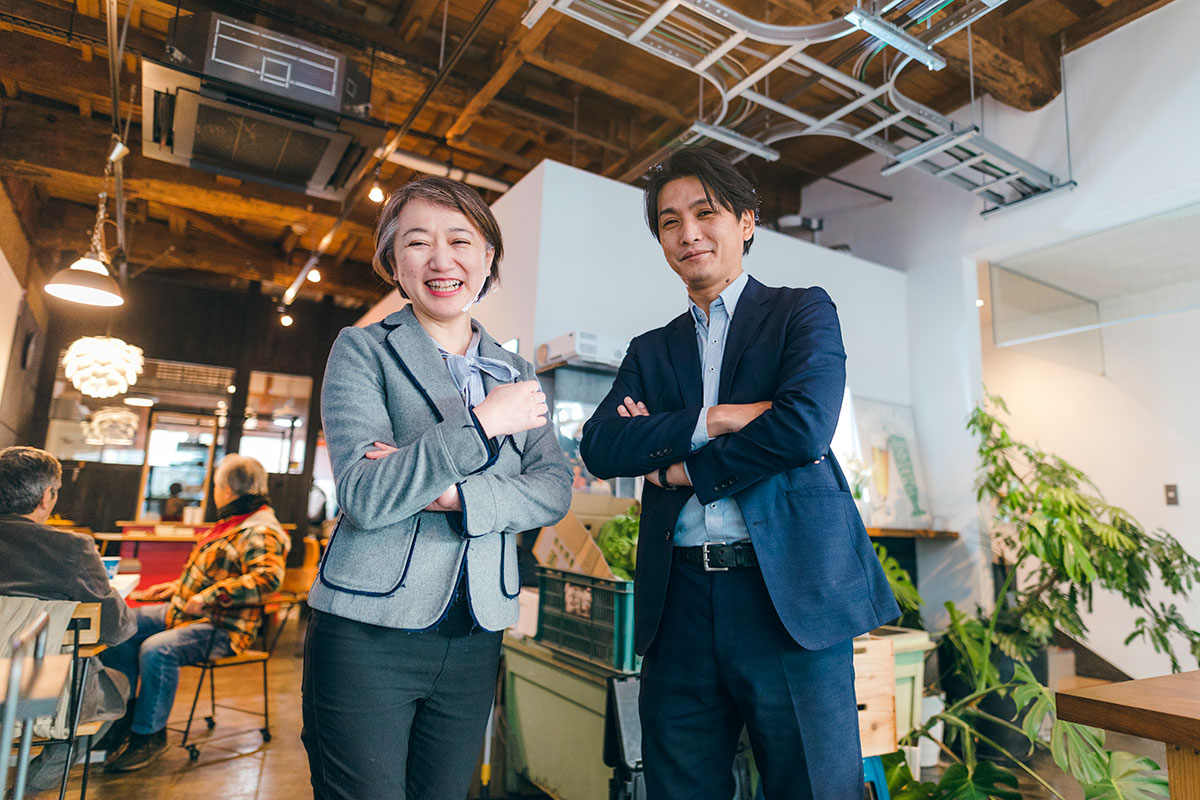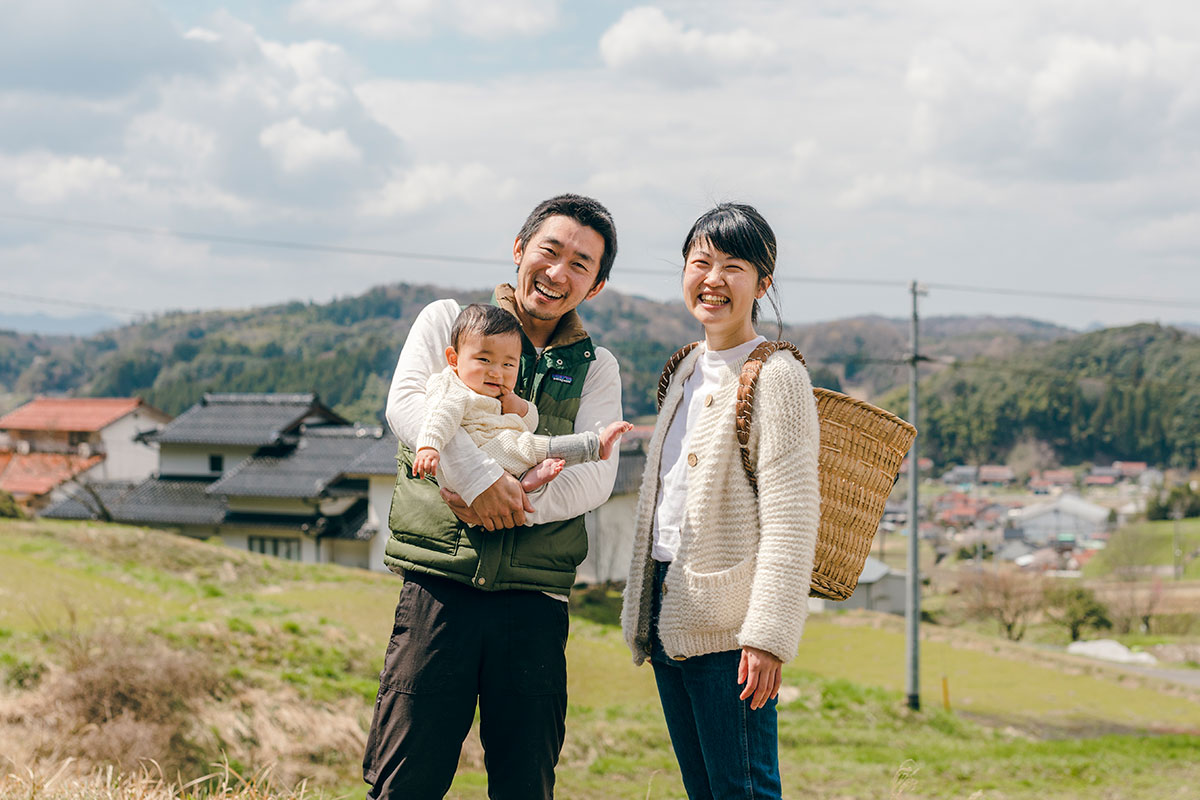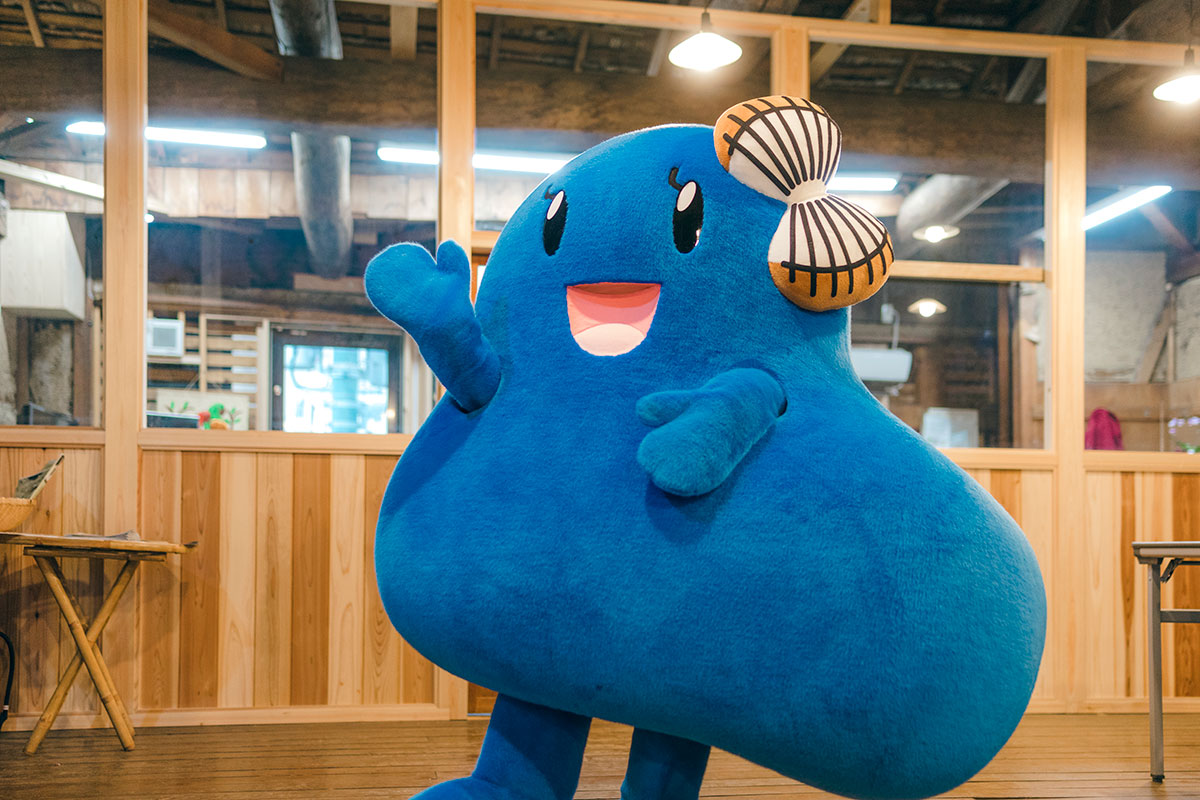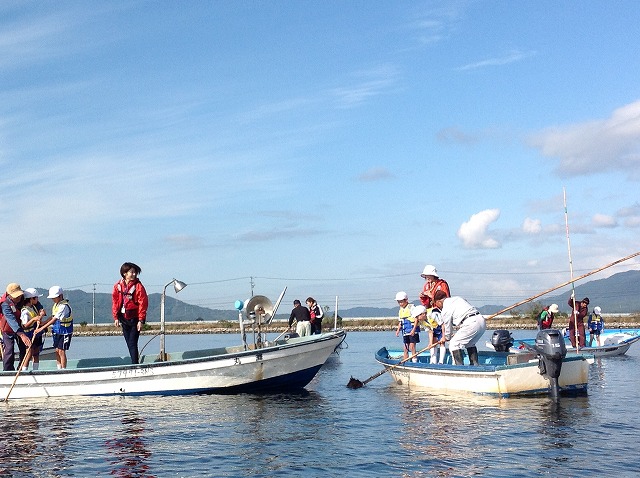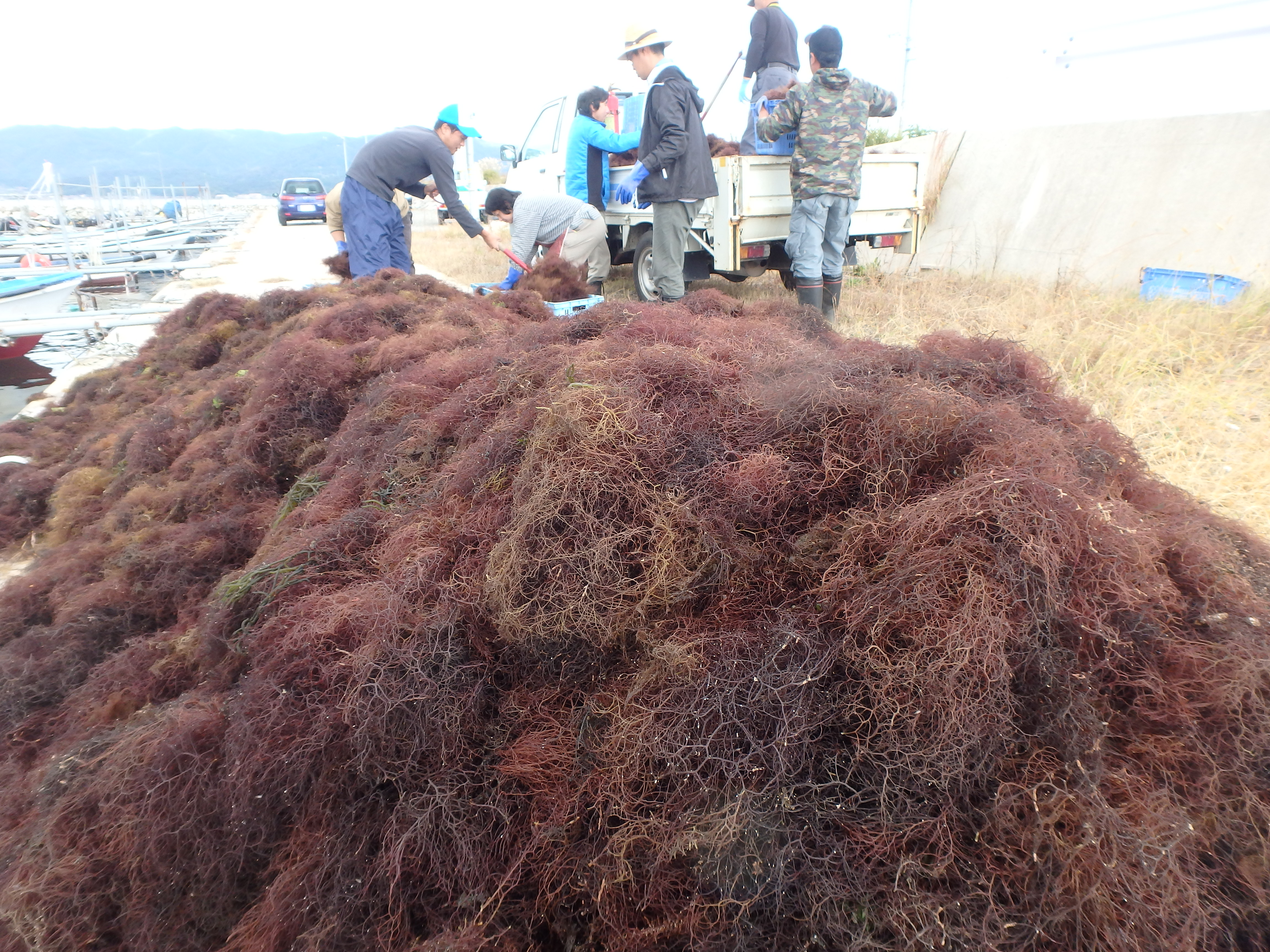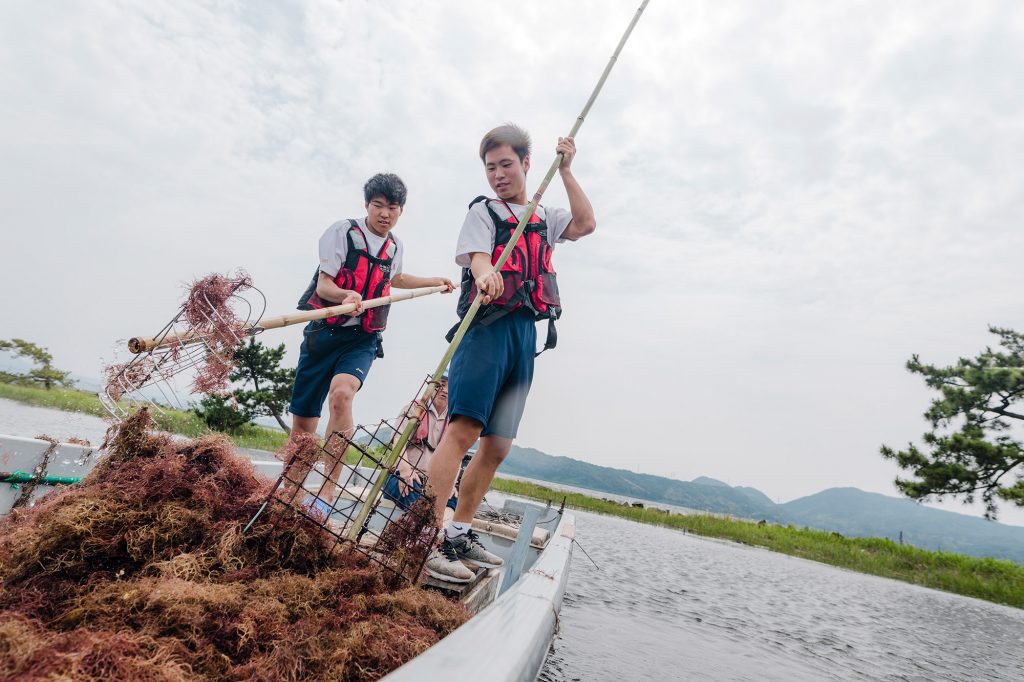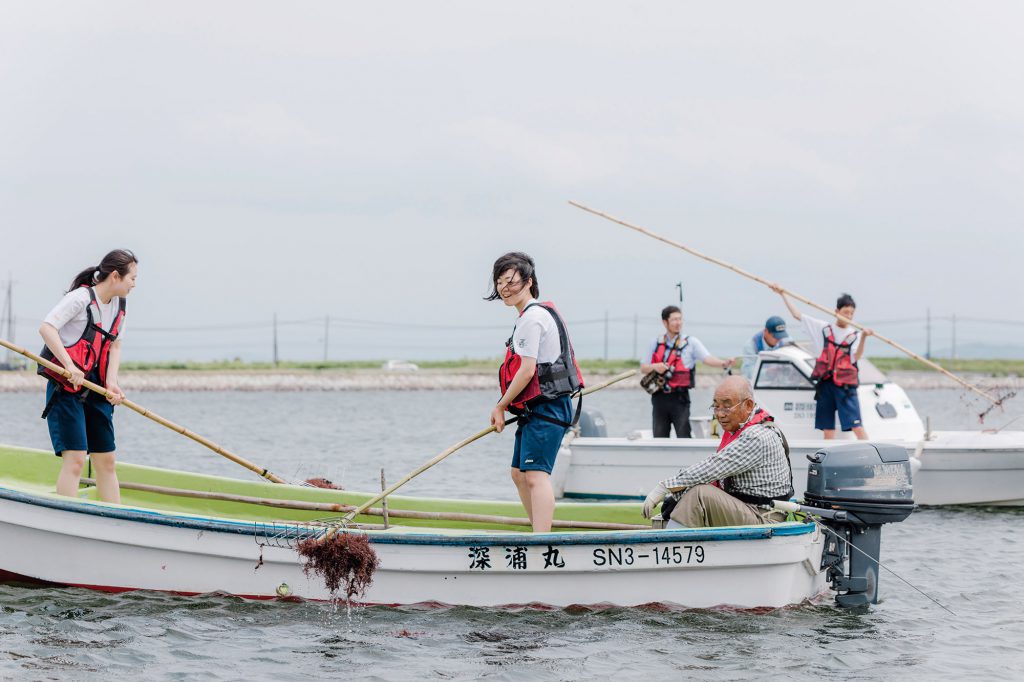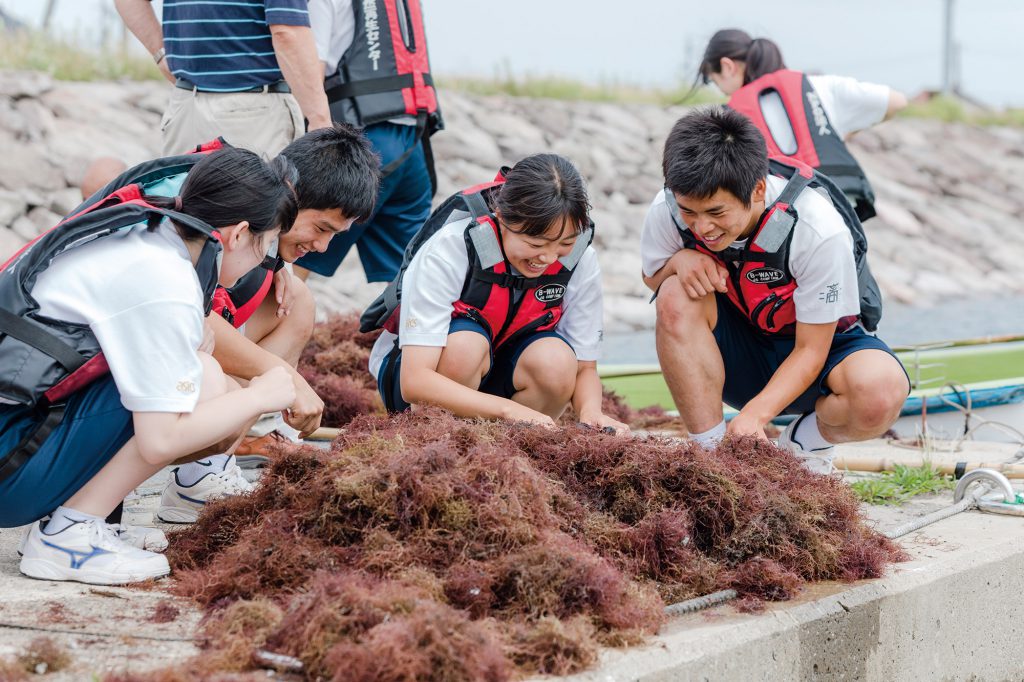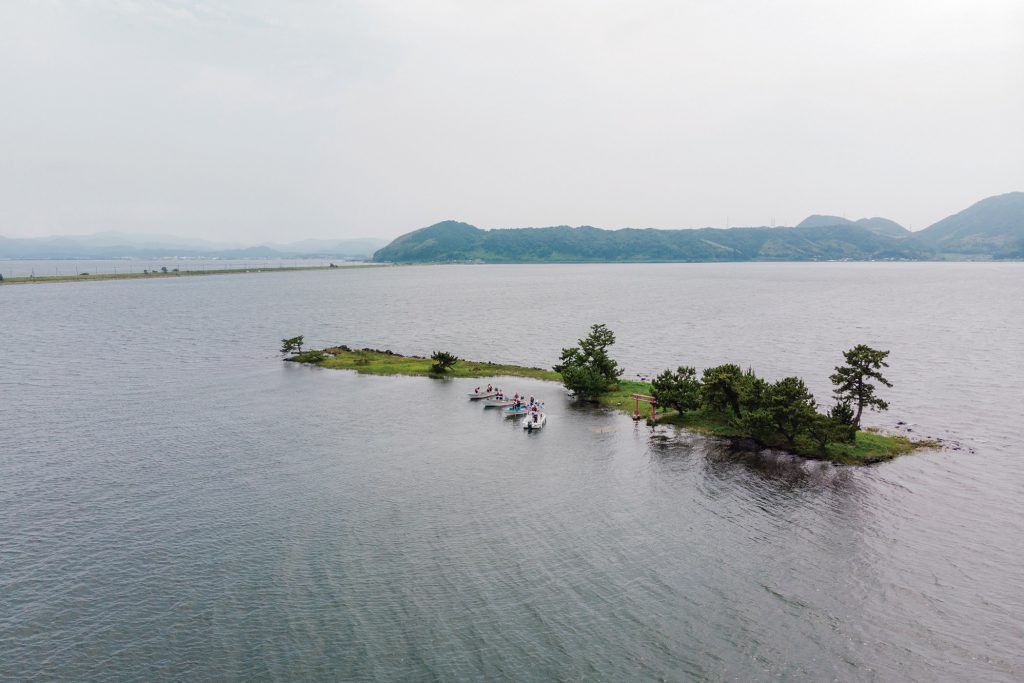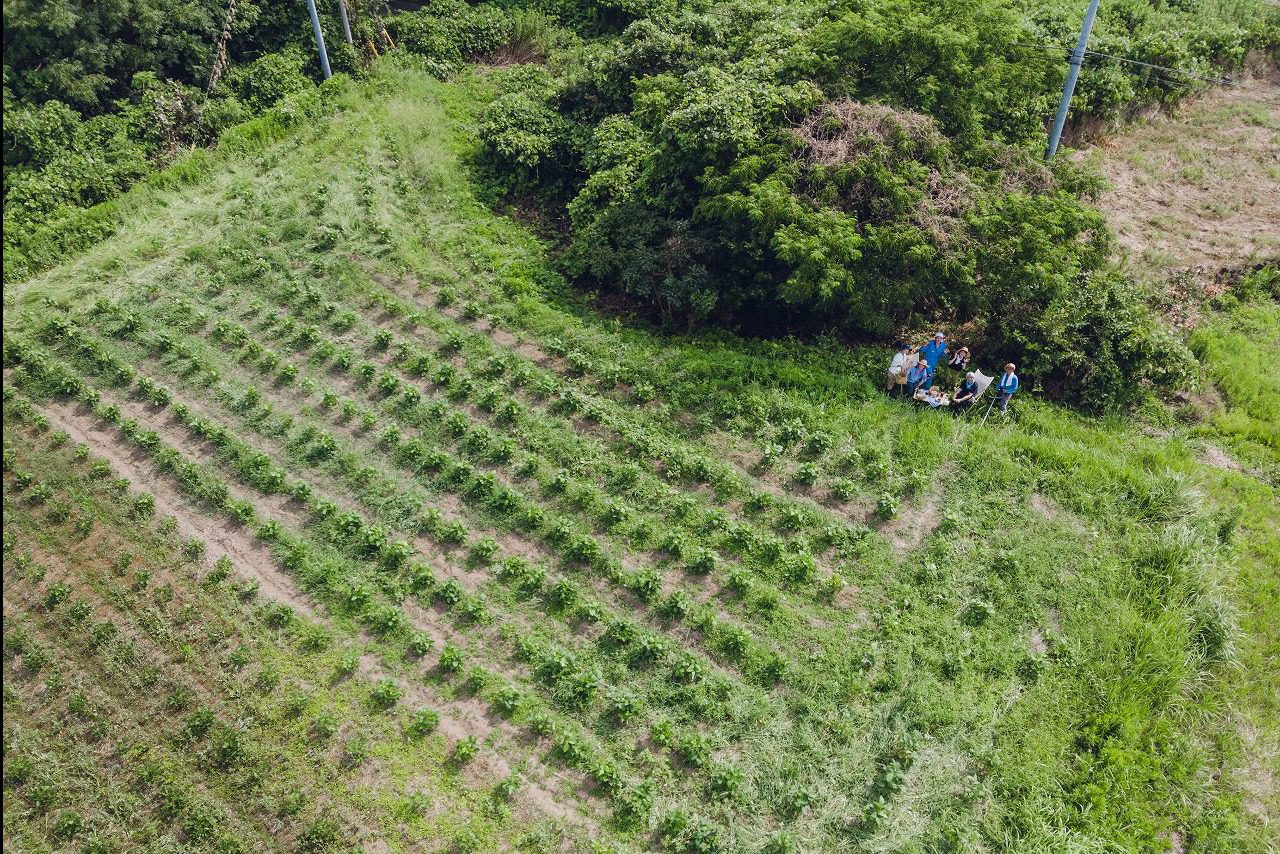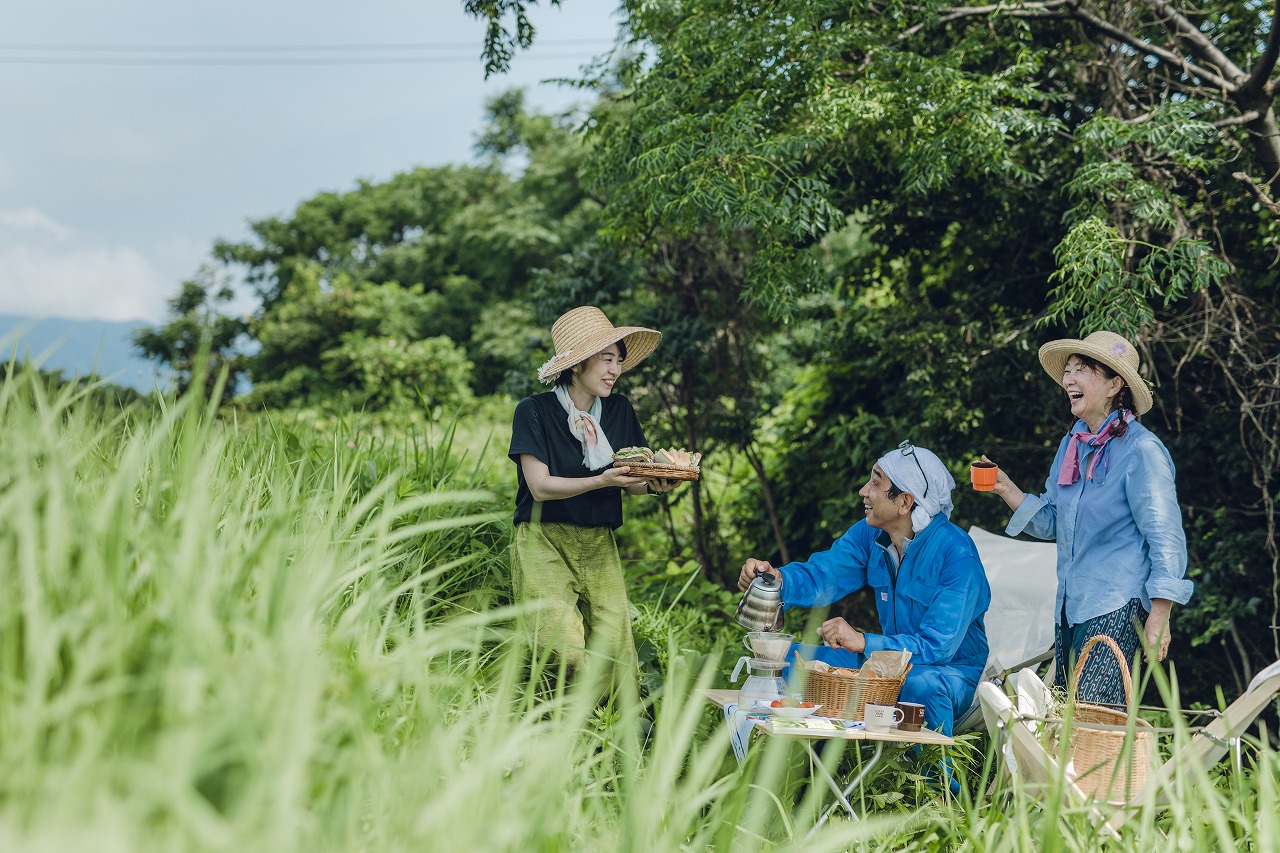中海の恵み「オゴノリ」から生まれる循環を通じて、
持続可能な社会のあり方を見つける
私たちはオゴノリを活用し、かつてあったような「環境」「人」「お金」の循環を再構築することで、中海のもたらす恵みの循環を、持続可能な形で次世代に残したいと考えています。
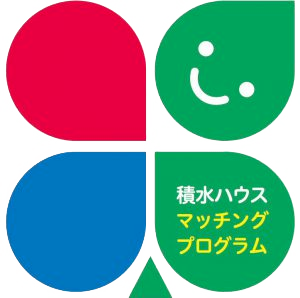
本事業は2021年度より積水ハウス株式会社の「積水ハウスマッチングプログラム」(環境基金)に採択され、活動を展開しています。
”「わが家」を世界一幸せな場所にする”をグローバルビジョンに掲げる積水ハウスグループでは、お客様、従業員、社会の「幸せ」を最大化するため、従業員と会社の共同寄付制度「積水ハウスマッチングプログラム」を実施しています。(積水ハウス株式会社ホームページより)
積水ハウスマッチングプログラムについてはこちらをご覧ください。

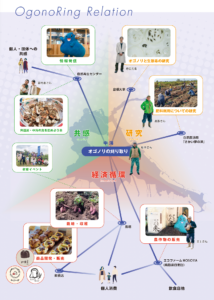
かつて、中海ではオゴノリなどの海藻を刈り取り、肥料として畑にまいて農作物を育てたり、良質な寒天の材料としての産業も盛んに行われていました。
しかし、1950年代半ばごろに化学肥料が台頭するようになり、海藻の需要は激減し、農薬の影響で海藻そのものの生息も激減してしまいました。
海藻は、生き物の棲み家の役目も果たす一方で、放置すると枯れてヘドロ化し水質に悪影響を及ぼします。肥料として定期的に刈り取られることで、中海の水質も維持され、栄養価の高い作物が収穫できる、まさに理想的な循環を実現していたのです。
近年になって、様々な環境改善の取り組みによって、中海の透明度が上がり水質が改善されると、再び海藻が大量に繁茂するようになりました。しかし、昔のように海藻を利用する仕組みが途絶えているため、刈り取られない海藻はヘドロ化し水質に悪影響を与える存在になってしまいました。
そのような状況の中、私たちはそのオゴノリを活用し、かつてあったような「環境」「人」「お金」の循環を再構築することで、中海のもたらす恵みの循環を、持続可能な形で次世代に残したいと考えており、それが「オゴノリング」です。
具体的には、中海に浮かぶ大根島の耕作放棄地を整備し、オゴノリを投入。大豆やサツマイモといった農作物を栽培し、そこで栽培や収穫のイベントを実施しています。
2019年度からは「畑部」などの部活を創設し、「部員」という形で事業に関わる方が増えてきました。また、栽培した農作物を販売し、購入していただくことで、事業についての周知や参画を図っています。
上記のような企画・運営等を次世代がプロジェクトリーダーとなり、行っています。
なかうみちゃんブログにて、オゴノリングのについて発信しています!
こちらもぜひご覧ください!
★2019年11月にオゴノリング事業(オゴノリ刈り)に参加してくれた松江工業高等専門学校の皆さんが、オゴノリング事業を英語でまとめてくれました!
HOW TO USE REJECTED SEAWEED(プレゼン資料)
英語説明文
この事業は、以下の視点でSDGsを実践しています。This project implements the SDGs from the following perspectives
★2024年12月倉田先生の研究室の博士課程の学生が英訳してくれました。
In the past, seaweed such as Ogonori was harvested from Nakaumi and used as fertilizer to cultivate crops. It also served as a key ingredient in the thriving production of high-quality agar.
However, around the mid-1950s, the rise of chemical fertilizers led to a sharp decline in the demand for seaweed. Additionally, the use of pesticides significantly reduced the natural habitat of seaweed itself.
Seaweed serves as a habitat for various organisms, but if left unharvested, it decays and turns into sludge, negatively impacting water quality. When regularly harvested for use as fertilizer, it helped maintain the water quality of Nakaumi while enabling the cultivation of nutrient-rich crops—creating an ideal cycle of sustainability.
In recent years, various environmental improvement efforts have enhanced the water clarity and quality of Nakaumi, leading to a resurgence of abundant seaweed growth. However, since the systems for utilizing seaweed as in the past have disappeared, unharvested seaweed now decays into sludge, becoming a factor that negatively impacts water quality.
In response to this situation, we aim to utilize Ogonori and rebuild the once-existing cycle of “environment,” “people,” and “economy.” By doing so, we hope to create a sustainable cycle of Nakaumi’s blessings and pass it on to future generations. This initiative is what we call the “Ogonoring”.
Specifically, we are revitalizing abandoned farmland on Daikonjima, an island in Nakaumi, by incorporating Ogonori. We cultivate crops such as soybeans and sweet potatoes and host events for planting and harvesting activities on the site.
Since fiscal year 2019, we have established initiatives such as the “Field Club,” increasing the number of participants involved in the project as “members.” Additionally, by selling the cultivated crops and encouraging people to purchase them, we aim to raise awareness about the project and foster broader participation.
For details about the club activities, please check here.
The planning, management, and other activities mentioned above are being led by the next generation, who take on the role of project leaders.
We share updates about the Ogono-ring initiative on the Nakaumi-chan Blog! Please be sure to check it out!
In November 2019, students from Matsue National College of Technology who participated in the Ogono-ring project created an English summary of the initiative!
- オゴノリング 2024.03.11毎日新聞に掲載されました!
- オゴノリング 2023.10.04【参加者募集】オゴノリング農場 大収穫祭!
- オゴノリング 2023.10.04【絶賛受付中!】オゴノリング農場 農作物予約販売
- オゴノリング 2023.06.01【参加者募集】 オゴノリング農場 6月の活動
- オゴノリング 2023.01.30オゴノリング 究極の手前みそを作ろう!!~1年を通して地域循環を感じる~
- オゴノリング 2022.10.13【参加者募集】オゴノリング農場 大収穫祭!
- オゴノリング 2022.10.13【絶賛受付中!】オゴノリング農場 農作物予約販売
- オゴノリング 2022.06.10【参加者募集】 6月の活動


